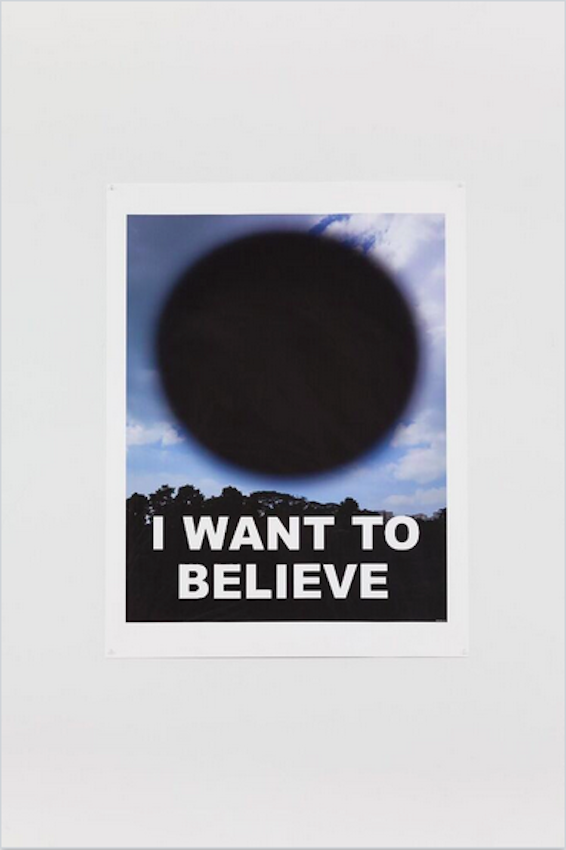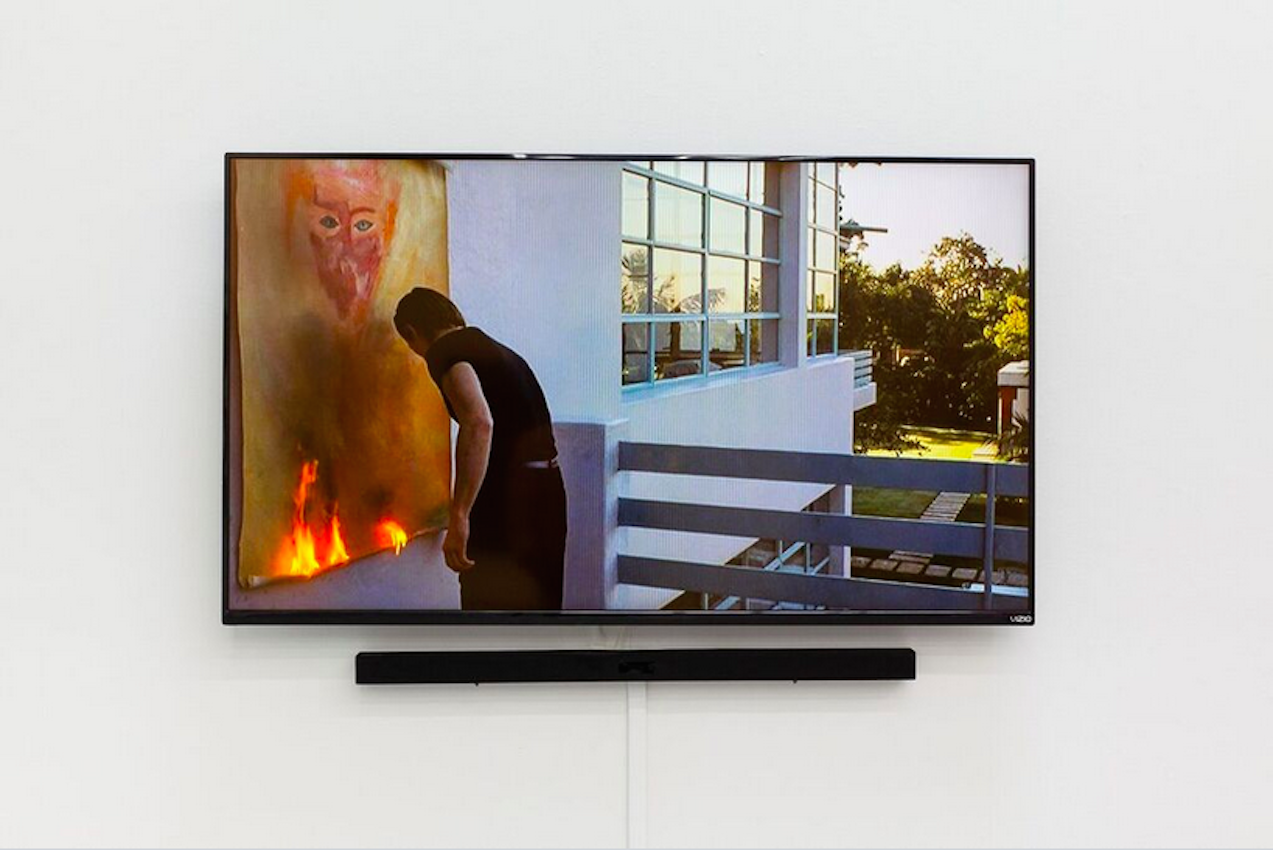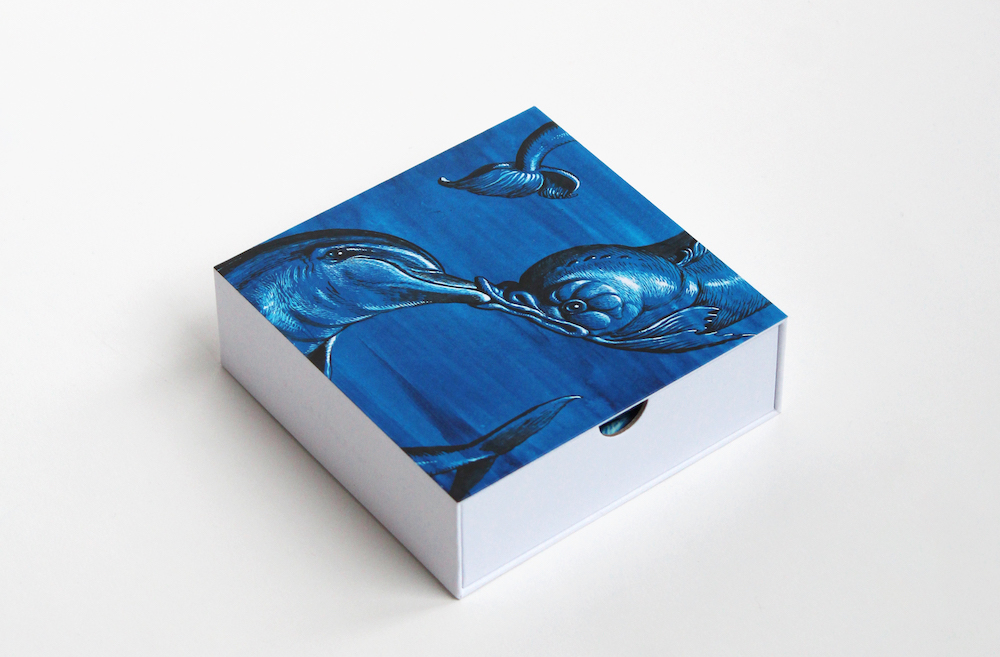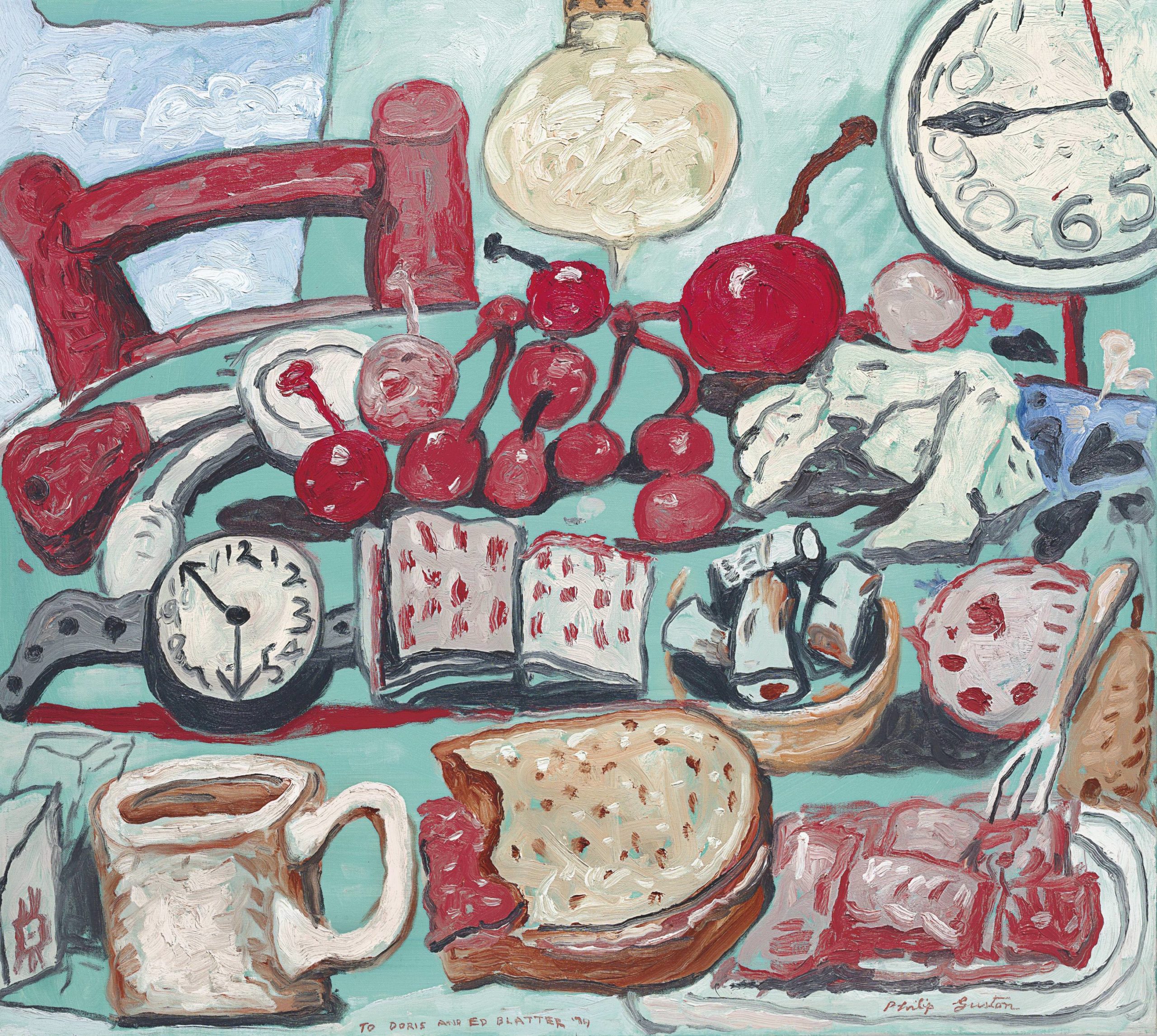The Swiss Institute is extending “Fade IN: INT. ART GALLERY-DAY” to May 19, an exhibition that looks at the distinct role played by artworks in cinema and television. The show’s title is a reference to the scene-heading lexicon used in screenwriting, and indicates that film is looked in its practical constructive elements, as well as the art placed in it.
The 25 various pieces shown (props, set dressings, character cues, symbols, and montage) force a meditation on cinema’s instrumental use of art’s societal status, for various narratives, and a reevaluation of these objects based on their pure reality as opposed to their contextual and virtual presence onscreen.

Courtesy of The Swiss Institute
Recognizable pieces include the X-File’s poster reproduced by Heman Chong I want to Believe, which had been inspired by Ed Ruscha. The portrait from The Picture Dorian Grey 1945 production directed by Albert Lewin sourced by Cindy Sherman herself, who additionally recreated its aging evil twin wrapped in velvet, as the character of Dorian Grey similarly does in the movie (Cindy Sherman’s first ever oil painting showcased yet hidden).
Danai Anesiadou’s installation of sets that contemplate on the role of the artist in three films very dear to her Teorema (1968, dir. Pasolini) Minnie and Moskowitz (1971, dir. Cassavettes) and Four adventures of Reinette and Mirabelle (1987, dir. Rohmer). The installation entitled Vesica iscis: Down with all States, Down with all Churches. Long live this Painter (2016) references especially a scene in Teorema where a young man talks about the radical role of the artist in today’s society and his duty to create a new art form, and then urinates on a blue canvas laid on the floor. Andy Warhol’s oxidization series, which came 10 years after, were allegedly a rip off from that scene.

Daniel Arsham’s Moving Figure; Courtesy Headington Cos.
The leading piece of the exhibition is a 24-minute montage by Christian Marclay, Made to be Destroyed, showing a succession of different film scenes in which artworks are being destroyed, juxtaposing an incredible myriad of genres, narratives, contexts, sound-effects, with the common denominator of one fundamental action. The film serves as a powerful concluding piece for the show open to different interpretations. It can be easily viewed through the political lens where the media directed to the masses revels in depicting destruction of elitist artifacts. It can also be more directly viewed as a depiction of destruction as an irresistible human impulse, as arguably art (both in its creation and destruction) transcends class struggle.

March 3-May 19, 2016

Courtesy of The Swiss Institute









